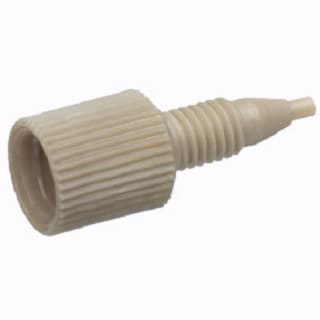by
Hollow » Wed Apr 17, 2024 11:08 pm
some more inputs on your analysis/system
1) with sugars on amino column you're actually doing HILIC separation, which is kind of "reversed-reversed phase" or "aqueous NP" chromatography. So in this case, water is your strong eluent. That's why ACN is in that high concentration.
You may search for more literature and primers on HILIC separations.
Link to Waters: HILIC Method Development Strategy Wall Chart:
https://www.waters.com/waters/library.h ... d=10170486
With this in mind, adjust and exchange the samples solvent, as well as the injector wash solvents, to match as close or having less of water than the eluent. Of course, sometimes there are compromises to be made, e.g. because of the solubility of the sample and cleaning efficiency. But then, it's better to inject less of a more concentrated solution than more volume (you already observed peaks going worse with higher injection volumes).
2) RI only works in isocratic mode. But also do not mix the solvent online but pump 100% of premixed solvent on a single channel. Maybe this is already enough to not need the Agilent Adapter (but I'm not familiar with that; but 100% of a single channel is mandatory, even on Waters systems.)
3) add some back-pressure device on the outlet of the RI will also help with the baseline. But be careful to stay below the maximum pressure of the RI cell (which is often quite low, only about 10 bar or so; check the spec of your model).
You may use a short piece of narrow-bore tubing or a designated back-pressure regulator (bpr). You may use the tubing as a first try and if it helps, invest in a bpr.
If making your own tubing, include some safety margin for higher flow rates and higher viscosity solvents. e.g. if you normally run at 1.4 ml/min of ACN/H2O mixtures, nevertheless calculate in the way that even 2 ml/min of MeOH/H2O would not crack the RI-cell...
Link to backpressure calculator for tubings from Waters:
https://www.waters.com/webassets/other/ ... itters.htm
Link to optimizetech:
https://www.optimizetech.com/shop/unive ... egulators/
4) give enough time of equilibration and purging the RI reference cell before doing the injections. Having the RI running some hours or overnight may be a good advice
5) before blaming your system or having it serviced (which may still be a good option, because that's what is often lacking in universities...) you may carry out some basic performance checks on your own. Maybe Agilent has some SOPs on what they normally do (or someone from this forum can provide more specific tips, how they do it on their 1100er):
- check the injector's repeatability gravimetrically: place 6-10 vials, filled with water and tared, in the autosampler, do some 1 or multiples injections from each vial, weigh them back and compare if their masses differ a lot or are acceptable. Depending on the injector design, the mass loss will be exactly what you've programmed or it may be more if some needle overfill are withdrawn too.
But I would expect it to be always the same amount that will be withdrawn with each injection.
- replace the column by a piece of tubing (e.g. 1m x 0.1 mm, to have some backpressure on the pump so they work properly), run and equilibrate with 100% MeOH (or ACN, or water); then make multiple injections from of e.g. caffeine in the same solvent and compare the peak areas.
-- do some variation of the injection volume to check also injection linearity.
- if the repeatability is still not ok, then probably you need to service the system first, then cary on with your column and separation.

